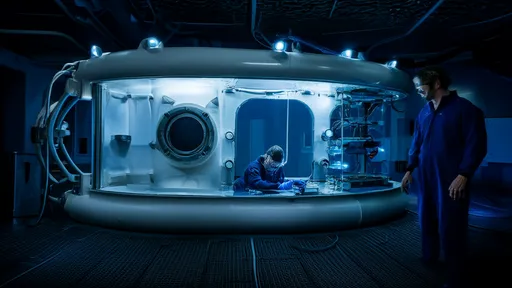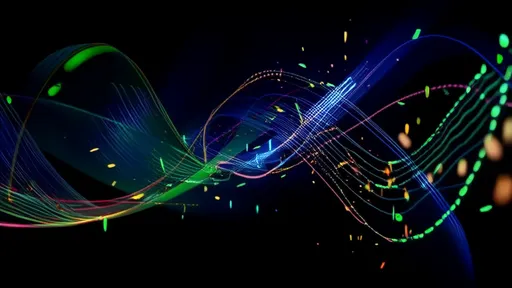Sound waves, unlike light, have a remarkable ability to bend around obstacles and spread through openings. This phenomenon, known as diffraction, plays a crucial role in how we perceive environmental noise in urban landscapes, natural settings, and architectural spaces. Researchers have long been fascinated by the complex interactions between sound waves and their surroundings, leading to the development of sophisticated environmental sound wave diffraction models.
At its core, diffraction occurs when sound encounters an obstacle or passes through a narrow opening. The waves spread out rather than traveling in a straight line, creating patterns of interference that affect how sound propagates. In environmental acoustics, this behavior influences everything from traffic noise mitigation to the design of concert halls. Understanding these patterns requires a deep dive into both physics and real-world applications.
Historical Context and Modern Applications
The study of sound diffraction dates back centuries, with early observations by scientists like Francesco Grimaldi and Augustin-Jean Fresnel. However, it wasn’t until the 20th century that researchers began applying these principles to environmental noise control. Today, diffraction models are used to predict how sound will behave in complex settings, such as cities with towering skyscrapers or forests with dense vegetation.
One of the most pressing applications is urban noise pollution management. As cities grow taller and more crowded, the reflection and diffraction of sound waves off buildings create "canyons" of noise. Engineers use diffraction models to design barriers and building layouts that minimize these effects. Similarly, in natural environments, these models help predict how animal communication signals might be distorted by terrain or foliage.
Challenges in Modeling Real-World Scenarios
While the basic principles of diffraction are well understood, applying them to real-world environments presents significant challenges. Unlike controlled laboratory conditions, outdoor settings are filled with irregular shapes, varying temperatures, and shifting wind patterns—all of which alter sound wave behavior. Computational models must account for these variables to produce accurate predictions.
Another complication arises from the wide frequency range of environmental sounds. Low-frequency sounds, like distant thunder, diffract more easily around large obstacles, while high-frequency sounds, such as bird calls, are more directional. This variability means that a single model may not suffice for all scenarios, requiring adaptive algorithms that can adjust to different acoustic conditions.
The Role of Technology in Advancing Research
Recent advancements in computing power and simulation software have revolutionized environmental acoustics. Finite element analysis (FEA) and boundary element methods (BEM) now allow researchers to create highly detailed virtual environments where sound wave interactions can be studied with precision. These tools enable the testing of countless scenarios without the need for costly physical prototypes.
Field measurements complement these simulations, providing ground-truth data to refine models. Arrays of microphones deployed in urban or natural settings capture real diffraction patterns, which are then compared to predicted results. This iterative process has led to increasingly accurate models that can account for the nuances of specific locations.
Future Directions and Environmental Impact
Looking ahead, researchers are exploring how climate change might alter sound propagation patterns. Rising temperatures and shifting wind currents could affect how noise travels over long distances, with implications for wildlife and human communities alike. Diffraction models will play a key role in anticipating these changes and developing strategies to mitigate negative impacts.
There’s also growing interest in biomimicry—using natural sound diffraction patterns, like those found in owl feathers or forest canopies, to inspire new noise-reduction technologies. By blending physics, ecology, and engineering, scientists hope to create solutions that are both effective and sustainable.
The study of environmental sound wave diffraction is more than an academic pursuit; it’s a critical tool for shaping quieter, healthier environments. As models become more sophisticated, their applications will expand, offering new ways to harmonize human activity with the acoustic landscapes we inhabit.

By /Aug 15, 2025

By /Aug 15, 2025

By /Aug 15, 2025

By /Aug 15, 2025

By /Aug 15, 2025

By /Aug 15, 2025

By /Aug 15, 2025

By /Aug 15, 2025

By /Aug 15, 2025

By /Aug 15, 2025

By /Aug 15, 2025

By /Aug 15, 2025

By /Aug 15, 2025

By /Aug 15, 2025

By /Aug 15, 2025

By /Aug 15, 2025

By /Aug 15, 2025

By /Aug 15, 2025

By /Aug 15, 2025

By /Aug 15, 2025